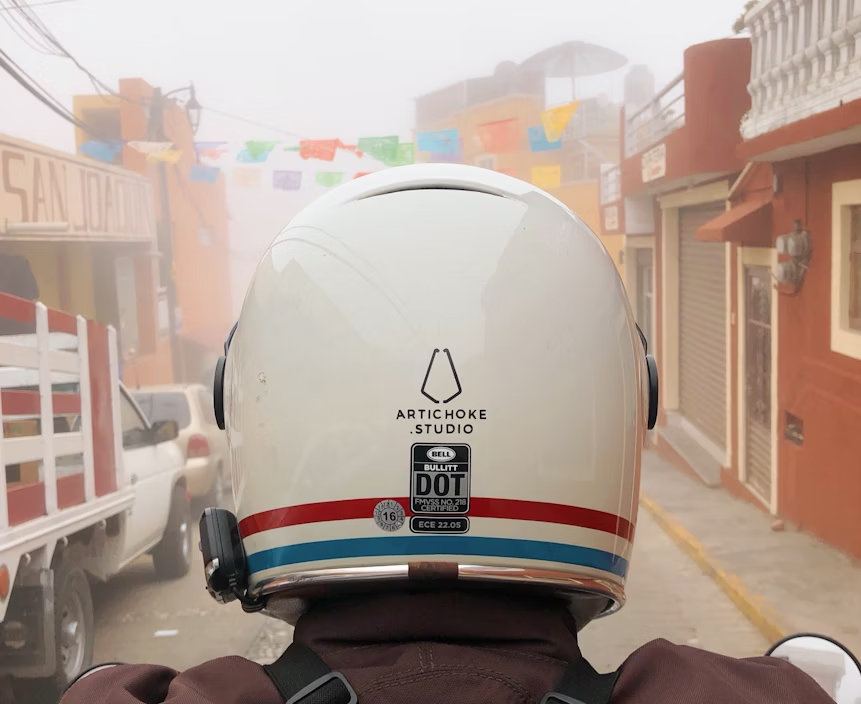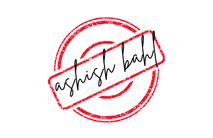
Before you read the blog we recommend all to visit the gearfinder tool (link here Best Riding Gear Guide 2025 | Use the Gear Finder Now ) to discover what you really need not what is being peddled to you in the name of influence and what not. At goodgearhub we don’t chase trends, brands or the herd. We are here to promote motorcycling and we were fed up of finding motivated content so we set goodgearhub so riders can review blog and videos, use the gear finder tool to assess their riding style and need then and only then shortlist what they need. To close the loop, soon we will be putting affiliate links so you don’t have to hunt where to buy from and can just visit the retailer section –
ECE and DOT Helmet Safety Standards: What Every Rider Should Know
You might have noticed your helmet stamped with something like “DOT approved” or “ECE certified” and wondered what that truly means. I’ve ridden a good amount and, quite frankly, figuring out these safety standards can be a bit of a jumble. Every rider wants the best protection possible, yet the details behind these two major marks can feel murky.
Let’s break it down in plain terms. In this write-up you’ll learn what the DOT and ECE labels cover, why they exist, and the essential bits every rider should keep in mind when shopping for a helmet. By the end, you’ll have some down-to-earth, real-world insights so that when you hit the road, you know your helmet’s got your back.
Before you read further do visit our gear finder tool to help you find the right gear – https://goodgearhub.com/gear-finder-tool/
A Quick Tale of DOT vs ECE Standards
Back in the late 1960s and 70s, when head injuries were on the rise, governments stepped in to help. In the United States, the Department of Transportation rolled out the Federal Motor Vehicle Safety Standard 218 (FMVSS 218) around 1974. This basic standard set out how helmets needed to handle impacts, fend off penetration, and keep that chin strap secure—essentially laying the groundwork for helmet safety across America.
Meanwhile, Europe went its own way. The United Nations Economic Commission for Europe put together its own set of guidelines under ECE Regulation 22 sometime in the 1970s. Since then, it’s seen a few updates. By 2000, the ECE 22.05 standard was the go-to requirement over much of the continent. Then, in 2020, a new twist called ECE 22.06 came along, raising the safety expectations further.
In short, DOT and ECE have become the must-know safety badges when picking your gear. Knowing a bit about their history can make it easier to understand why they put helmets through such rigorous testing.
Comparing Testing Methods and Requirements
Both DOT and ECE subject helmets to a battery of lab tests to see if they’ll stand up in a crash. Helmets get dropped on metal headforms (think of them as simulated skulls) and then are tested for impacts, chin strap strength, and penetration resistance. Still, the approaches differ quite a bit. Here’s a quick rundown of things that set them apart:
- Aspect: Impact Attenuation
- DOT (FMVSS 218): Runs two impacts per spot, often using flat and hemi anvils, with a limit around .
- ECE 22.05/22.06: Usually only uses one impact per point, working with flat and kerbstone anvils, and tests under .
- Impact Procedure:
- DOT: Uses a guided drop with multiple conditions.
- ECE: Favors a freer approach—letting the helmet drop, with varied speeds and surfaces.
- Penetration Test:
- DOT: Yes—it uses a pointed striker.
- ECE: Generally doesn’t, although note that the 22.06 revision even checks for visor penetration.
- Chin Strap/Retention:
- DOT: Implements a dynamic pull test.
- ECE: Combines a dynamic test with an extra roll-off check.
- Certification:
- DOT: Manufacturers self-certify their helmets meet the standard.
- ECE: Helmets are approved only after testing in accredited labs.
- Enforcement:
- DOT: The National Highway Traffic Safety Administration (NHTSA) pops in for random post-sale checks.
- ECE: Involves rigorous pre-sale and even batch testing routines.
- Oblique Impact Test:
- DOT: This isn’t a requirement.
- ECE: It’s mandatory under the new 22.06.
It ends up that ECE helmets are put through tests from more angles, including managing rotational forces (thanks to the 22.06 update), while DOT is more focused on high-energy, straight-on hits and keeping penetration at bay.
Certification and Trust Issues
Diving a little deeper, one big difference is how helmets get certified. For DOT, it’s on the manufacturer to state that their helmet meets the standards—there isn’t any pre-sale government testing. Instead, agencies like NHTSA might randomly check helmets after they’re out in the wild, and if things don’t measure up, fines or recalls can follow. ECE, on the other hand, insists that helmets must pass a series of tests in accredited labs before receiving that badge of approval—manufacturers even get a type-approval number after all tests are done.
Many riders lean towards ECE simply because it usually means a more consistent safety check, while DOT relies a lot on the manufacturer’s word.
ECE 22.06: The New Benchmark
Nowadays, ECE 22.06 is seen as the most rigorous helmet standard around. Generally speaking, it pushes the safety limits further, ensuring that as technology and risks evolve, so does the protection your helmet offers.
There’s been quite a few fresh updates since version 22.05. For instance, the testing now goes beyond mere drop tests – they’re checking how helmets handle oblique impacts, which means those tricky rotational forces come into play. They even expanded the impact spots, sometimes testing up to 18 different points on a helmet. And it’s not only about one kind of hit: low-speed drops get compared with high-speed ones to see how the helmet copes under both conditions. On top of that, accessories like intercoms, visors, and sun peaks get their own round of safety checks.
You might also notice a shift in the market approach. These days, many of the big names – think Shoei, AGV, HJC, Arai, and Bell – are wedded to the idea of dual certifications, sporting both DOT and the newer ECE 22.06 labels on their helmets. Generally speaking, this double mark of approval is meant to offer a broader range of protection, no matter where you ride.
Regional nuances add an extra twist. Over in the U.S., it’s all about DOT-approved helmets – it’s legally required, and in most cases, having an extra stamp like ECE or even Snell along with DOT is considered the gold standard. Across the Atlantic, European riders have to stick with ECE-certified helmets; new models only pass muster if they’re ECE 22.06 compliant. Over in Asian markets, things can be a bit more relaxed with either ECE or DOT being acceptable, though some places even lean on local standards (like ISI in India or JIS in Japan). So if you’re someone who hops borders on a regular basis, a helmet certified by both DOT and ECE could keep you on the right side of the law and well-protected.
Which helmet fits your style really depends on your needs. For those commuting daily, you want something comfortable with good airflow and the proper certification — DOT in the U.S. or ECE in Europe, naturally. Touring riders might lean toward a full-face or modular design that’s not only quiet and lightweight but also carries both DOT and ECE stamps. If you’re into off-road or adventure riding, a dual-sport helmet with a sun visor that’s been tested for rugged conditions (again, with DOT/ECE backing) is the way to go. And for track days where speed and safety go hand in hand, look for helmets certified by Snell or the new ECE 22.06 to get maximum protection at high speeds. Sometimes even a tool like GoodGearHub’s Gear Finder can help sift through the options and narrow things down.
DOT, ECE, and Snell: A Deeper Dive into Helmet Safety Standards
When you’re choosing a motorcycle helmet, understanding the nuances of DOT, ECE, and Snell certifications is key to making an informed decision about your safety. While all three aim to protect your head, their testing philosophies, requirements, and enforcement methods differ significantly.
DOT (Department of Transportation – FMVSS 218) is the mandatory standard for helmets sold in the United States. It’s a self-certification program, meaning manufacturers test their own helmets and attest that they meet the standard. The DOT focuses on impact attenuation (how well the helmet absorbs energy from a direct hit), penetration resistance, and retention system strength. DOT tests involve dropping helmets onto flat and hemispherical anvils from specific heights, and the peak G-force transferred to the headform must not exceed 400g. While it sets a minimum safety bar, critics sometimes point to the self-certification aspect and the relatively higher G-force limit compared to other standards.
ECE (Economic Commission for Europe – Regulation 22) is the mandatory standard across Europe and is recognized in over 50 countries globally. Unlike DOT, ECE requires helmets to be batch-tested and approved by independent, accredited laboratories before they can be sold. The latest iteration, ECE 22.06, is considered one of the most rigorous global standards. It includes more impact points, tests both high and low-speed impacts, and crucially, introduces an oblique impact test to assess how well a helmet manages rotational forces, which are a major cause of brain injuries. ECE’s G-force limit is lower () than DOT’s, and it uses flat and kerbstone anvils. This standard’s comprehensive testing and independent oversight often make it a preferred choice for many riders worldwide.
Snell (Snell Memorial Foundation) is a private, non-profit organization that sets voluntary, highly stringent standards for helmets, primarily in North America. Snell certification is often considered the “gold standard” for racing and high-performance riding due to its exceptionally demanding tests. Snell’s M2020 standard (with M2020D for DOT compatibility and M2020R for ECE/FIM compatibility) involves multiple impacts to the same spot, higher impact velocities, and the use of more aggressive “edge” anvils in addition to flat and hemispherical ones. While Snell has historically focused on managing high-energy linear impacts, the M2020R standard now incorporates elements to address rotational forces, aligning more closely with ECE’s approach in that regard. However, Snell’s emphasis on high-energy absorption can sometimes lead to helmets with stiffer EPS liners, which some argue might transfer more energy in lower-speed impacts. Despite this debate, Snell-certified helmets offer an exceptional level of protection, often exceeding legal requirements.
In summary, while DOT provides a fundamental level of safety, ECE 22.06 offers a more comprehensive and independently verified standard, particularly with its focus on rotational impacts. Snell pushes the boundaries of protection with its extremely rigorous testing, making it a top choice for those seeking the highest possible safety margins, especially in racing environments. Many premium helmets carry multiple certifications, offering riders the best of all worlds.
ECE and DOT Helmet Safety Standards – goodgearhub wrap
At the end of the day, understanding the ins and outs of ECE versus DOT safety standards can really make a difference when you’re shopping for gear. Both sets of standards have their perks, and while they differ in approach, they’re both ultimately about keeping riders safe—and that’s the bottom line. Here at GoodGearHub, we don’t just recommend gear from afar; we ride with it. Our mission is to help you test, choose, and trust the safest, most comfortable equipment before you hit the throttle. So make sure that when you strap on your helmet, it isn’t just legal—it’s genuinely built to protect.
Trusted Gear Links
USA
EU/UK
https://www.sportsbikeshop.co.uk
https://www.championhelmets.com
SPECIALIST GEAR SITES
https://www.lonerider-motorcycle.com


